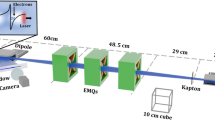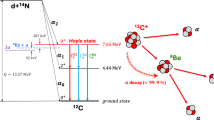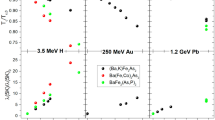Abstract
IN a paper on secondary radiation from gases subject to X-rays (Phil. Mag. [6] v., p. 685, 1903), I described experiments which led to the conclusion that this radiation is due to what may be called a scattering of the primary X-rays by the corpuscles (or electrons) constituting the molecules of the gas. More recently I have found that from light solids which emit a secondary radiation differing little from the primary, the energy of this radiation follows accurately the same law as was found for gases, so that the energy of secondary radiation from gases or light solids situated in a beam of Röntgen radiation of definite intensity is proportional merely to the quantity of matter through which the radiation passes. Experimental evidence points to a similar conclusion even when metals which emit a secondary radiation differing enormously from the primary are used as radiators, though I have as yet only shown that the order of magnitude is the same in these cases. The conclusion as to the origin of this radiation is therefore equally applicable to light solids, and probably to the heavier metals.
This is a preview of subscription content, access via your institution
Access options
Subscribe to this journal
Receive 51 print issues and online access
$199.00 per year
only $3.90 per issue
Buy this article
- Purchase on SpringerLink
- Instant access to full article PDF
Prices may be subject to local taxes which are calculated during checkout
Similar content being viewed by others
Author information
Authors and Affiliations
Rights and permissions
About this article
Cite this article
BARKLA, C. Polarisation in Röntgen Rays. Nature 69, 463 (1904). https://doi.org/10.1038/069463a0
Issue date:
DOI: https://doi.org/10.1038/069463a0
This article is cited by
-
High-precision X-ray polarimeter based on channel-cut crystals
Nuclear Science and Techniques (2024)



